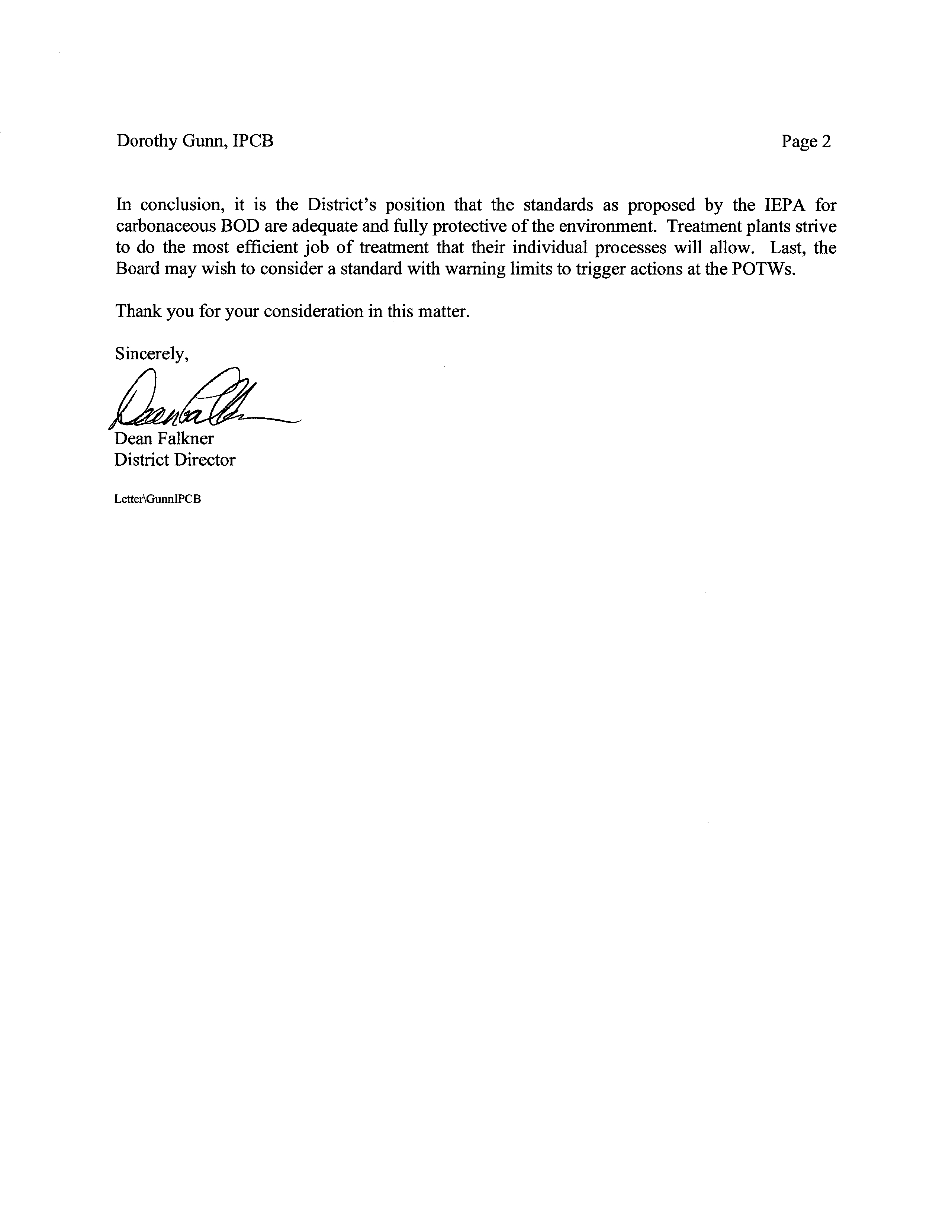Kent Logan, President
Donald Massier, Vice President
Donald Markgraf, ClerklTreasurer
Lloyd Hawks, Trustee
Roger Erkert, Trustee
Dean Falkner, District Director
RECEIVED
March 1, 2002
CLERK’S
OFFw~r
MAR 5
2002
STATE OF IWNOIS
Pollution Control Board
RE:
Support for IEPA Carbonaceous BOD Proposal
Before the IPCB
Dear Ms. Gumi:
The use of carbonaceous BOD as a parameter for measuring the efficiency of secondary
treatment processes has been a standard for many decades. Also, the concern of interference
from nitrogenous compounds in the
BOD-5
test has been a concern traceable in literature from
the 1930s. It has further been demonstrated that while the nitrogenous interference is sufficiently
high to need correction, it is nevertheless a small portion of the total BOD from nitrogenous
compounds.’ Consequently, in 1984 the USEPA authorized the use of CBOD for determining
secondary treatment process efficiencies.
In general, treatment plants strive for the highest efficiency and, therefore, the lowest CBOD
effluent that their individual processes can achieve. Typical CBOD effluents range from 3 to 9
mg/i. It is the District’s belief it is not necessary to deviate from IEPA’s suggested CBOD
parameters. The BOD tests by theirvery nature, have a large standard deviation. For example, a
fmal effluent CBOD of 6 mg/l could easily have a standard deviation of plus or minus 2 or a
range from 4 to 8 mg/l and, therefore, statistically all numbers between 4 and 8 are the same as
the mean of6.
It is further suggested that rather than reduce the limits suggested by IEPA, the Board may
consider an approach ofsetting warning limits or limits that would rather than trigger compliance
enforcement, initiate investigations by the POTWs into the reasons for the higher-than-usual
reported values. As example, the warning limit could be triggered when a POTW discharges
CBOD above the
80th
percentile ofstandard.
1
Chemistry for Sanitary Engineers published 1960. Clare N. Sawyer, Chapter 23
Lation
1-
3333 Kishwaukee Street
P.O. Box 7480
Rockford, Illinois 61126-7480
I~8-r~4~r~
815) 387-7400
ii 11
Illinois Pollution Control Board
Attn: Dorothy Gunn, Clerk, re Docket R02-11
James R. Thompson Center
100 West Randolph Street, Suite 11-500
Chicago, Illinois 60601
y
Dorothy Gunn, IPCB
Page 2
In conciusion, it is the District’s position that the standards as proposed by the IEPA for
carbonaceous BOD are adequate and fully protective ofthe environment. Treatment plants strive
to do the most efficient job of treatment that their individual processes will allow. Last, the
Board may wish to consider a standard with warning limits to trigger actions at the POTWs.
Thank you foryour consideration in this matter.
Sincerely,
Dean Faikner
District Director
Letter\GunnIPCB



